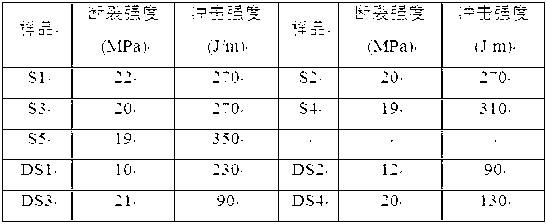Metal resin integrated forming method and metal resin composite
A metal resin and molding method technology, which is applied in the field of metal resin composites and metal resin integrated molding, can solve problems such as poor mechanical strength, complex molding process, and harsh conditions, achieve good mechanical strength and surface treatment characteristics, and solve surface problems. Decoration issues, the effect of meeting diverse needs
- Summary
- Abstract
- Description
- Claims
- Application Information
AI Technical Summary
Problems solved by technology
Method used
Image
Examples
Embodiment approach
[0021] As a preferred embodiment of the present invention, the metal surface treatment method further includes: immersing the metal having a nanopore oxide film on the surface into an etching solution to form corrosion holes on the outer surface of the oxide film. The corrosion hole communicates with the nanopore. The double-layer three-dimensional hole structure formed by the corrosion hole and the nano hole is beneficial to further provide the permeability of the resin composition, improve the binding force between the resin composition and the metal, and is more conducive to molding.
[0022] The diameter of the corrosion holes is 200-2000nm, more preferably 200-1000nm, most preferably 400-1000nm. The depth of the corrosion hole is 0.5-9.5um, more preferably 0.5-5um. Further optimizing the structure of the corrosion hole is more conducive to the direct injection of the resin composition and the combination of the resin composition and the alloy during injection molding.
...
Embodiment 1
[0035] (1) Pretreatment: Cut the commercially available A5052 aluminum alloy plate with a thickness of 1mm into rectangular pieces of 18mm*45mm, and then soak it in 40g / L NaOH aqueous solution at a solution temperature of 40°C, wash and dry after 1min, A pretreated aluminum alloy sheet is obtained.
[0036] (2) Surface treatment 1: Put the above aluminum alloy sheet as an anode into H2O containing 20wt% 2 SO 4 In the anodizing tank, electrolyze at 20V, 18°C for 10min, and blow dry.
[0037] Use a metallographic microscope to observe the cross-section of the aluminum alloy sheet after surface treatment 1, and measure the 5um thick aluminum oxide film layer on the surface of the aluminum alloy sheet after electrolysis, and use an electron microscope to observe the surface of the aluminum alloy sheet after surface treatment 1. The aluminum oxide film layer contains nanopores with a diameter of about 40-60 nm, and the depth of the nanopores is 1 μm.
[0038] (3) Surface treat...
Embodiment 2
[0042] The same steps as in Example 1 were used to prepare the metal-resin composite S2 of this example, except that in step (1), a commercially available magnesium alloy plate with a thickness of 3mm was cut into rectangular pieces of 18mm*45mm , to replace the aluminum alloy plate in Example 1;
[0043] In step (2), the above-mentioned magnesium alloy sheet is used as an anode and placed in 20wt% H 2 SO 4 In the anodizing tank, electrolyze at 15V and 18°C for 10min, and blow dry.
[0044] Using a metallographic microscope to observe the cross-section of the magnesium alloy sheet after surface treatment 1, it is measured that a 5um thick magnesium oxide film layer is prepared on the surface of the magnesium alloy sheet after electrolysis, and the aluminum oxide film layer contains nano-micropores with a pore size of 20-40nm , the hole depth of the nano-micropore is 1um.
[0045] Using a metallographic microscope to observe the surface of the magnesium alloy sheet after s...
PUM
| Property | Measurement | Unit |
|---|---|---|
| melting point | aaaaa | aaaaa |
| pore size | aaaaa | aaaaa |
| pore size | aaaaa | aaaaa |
Abstract
Description
Claims
Application Information
 Login to View More
Login to View More - R&D
- Intellectual Property
- Life Sciences
- Materials
- Tech Scout
- Unparalleled Data Quality
- Higher Quality Content
- 60% Fewer Hallucinations
Browse by: Latest US Patents, China's latest patents, Technical Efficacy Thesaurus, Application Domain, Technology Topic, Popular Technical Reports.
© 2025 PatSnap. All rights reserved.Legal|Privacy policy|Modern Slavery Act Transparency Statement|Sitemap|About US| Contact US: help@patsnap.com

